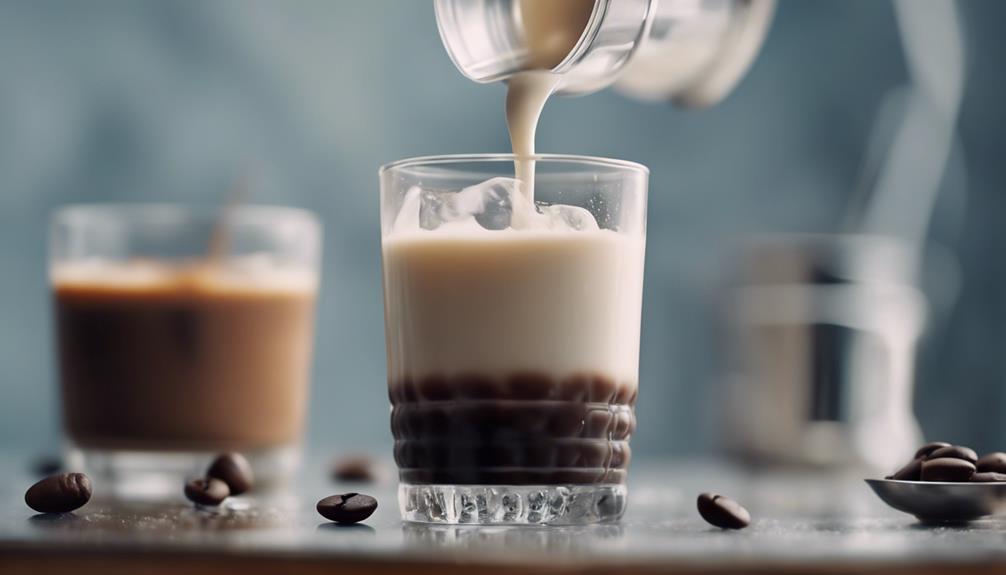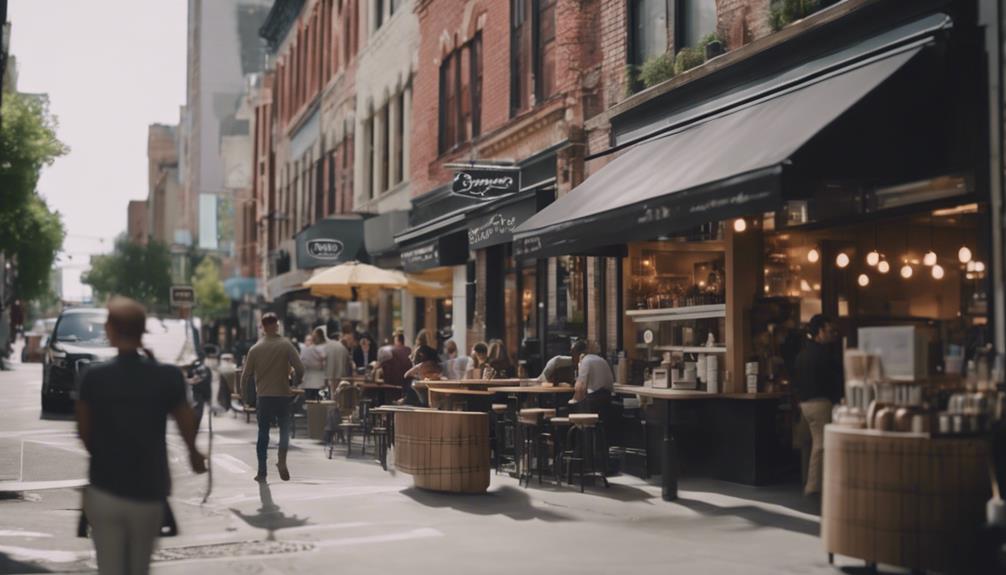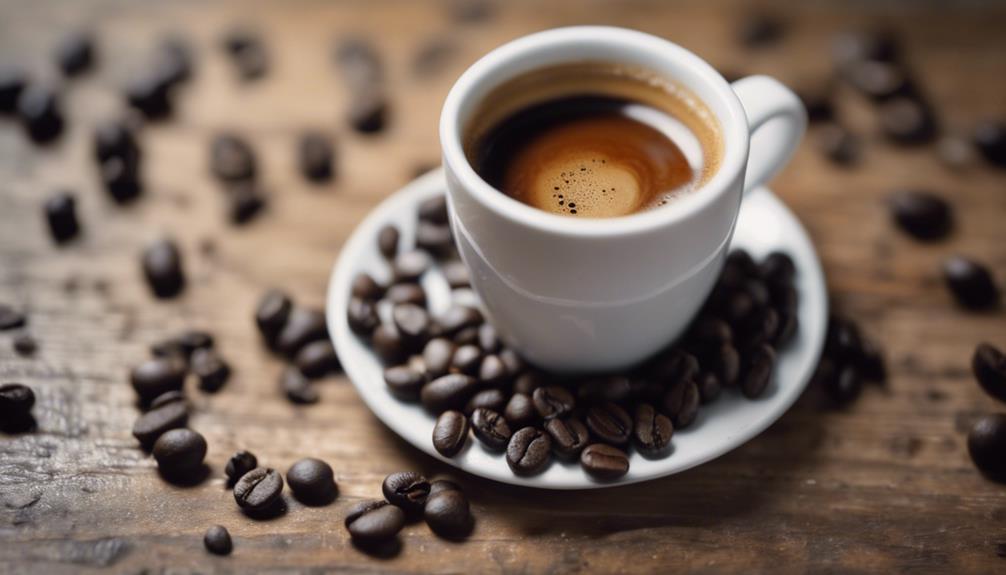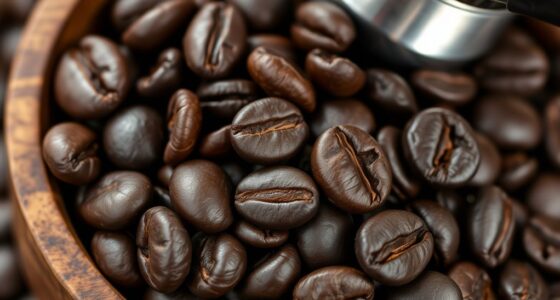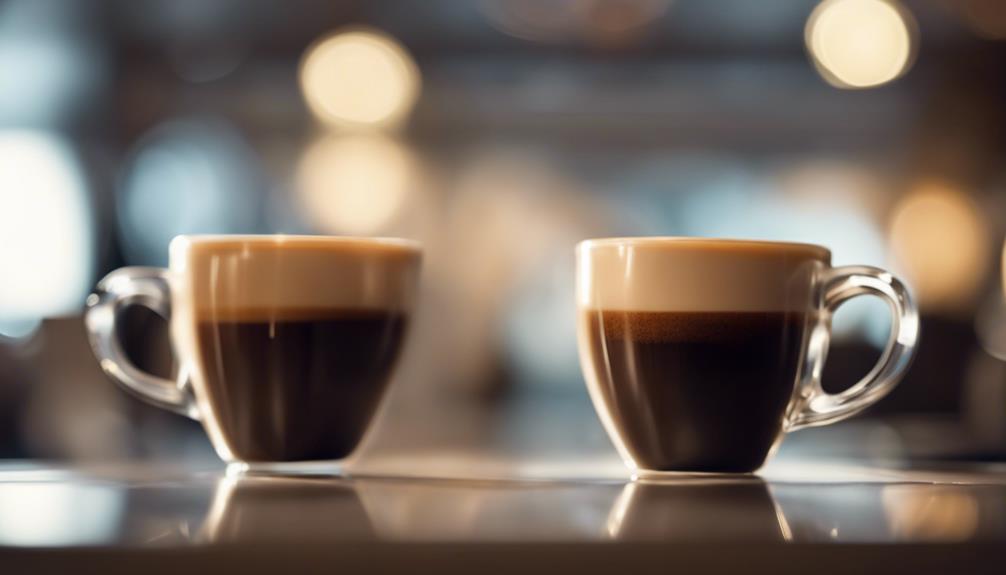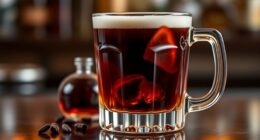Make espresso martinis without dairy by using oat, almond, coconut, or soy milk as a creamy base, accommodating different dietary requirements. Opt for high-quality hot espresso for a full-bodied taste and combine it with vodka and dairy-free liqueur. Shake vigorously, strain, and garnish with espresso beans. Experiment with flavors like vanilla or hazelnut for a unique touch. Serve in chilled glasses with stylish decorations. Follow these steps to create the perfect martini, enhancing your drinking experience. Add cinnamon, nutmeg, or flavored sugar rims for extra flair. Hone your skills with a bar set for consistent results, setting the standard for dairy-free martini excellence. Impress your guests with your newfound knowledge in making dairy-free espresso martinis. Whether you’re throwing a party or just relaxing at home, this invigorating shaken espresso recipe is sure to be a crowd-pleaser. Take your mixology skills up a notch and establish a reputation for your delicious and innovative dairy-free cocktails. With these tips and techniques, you’ll soon become an expert in dairy-free martinis. Elevate your next event with a special drink that will have everyone asking for more.
Key Takeaways
- Choose quality, hot espresso for a creamy texture.
- Use vegan-friendly oat milk for richness.
- Shake ingredients vigorously for optimal flavor.
- Experiment with flavored oat milk for variety.
- Garnish with coffee beans for a stylish finish.
Benefits of Dairy-Free Espresso Martinis
Crafting Dairy-Free Espresso Martinis offers a versatile and inclusive cocktail option for various dietary needs and preferences. By incorporating oat milk into the mix, you can enjoy a creamy texture in your espresso martini without the need for dairy products. This makes dairy-free espresso martinis a fantastic choice for individuals with lactose intolerance, dairy allergies, vegans, or those simply seeking to reduce their dairy intake.
Oat milk not only provides a creamy consistency but also enhances the flavor profile of the cocktail, offering a unique and delightful taste experience.
Moreover, opting for dairy-free options like oat milk in your espresso martini can cater to a wider range of dietary preferences and restrictions, making it a more inclusive and accommodating choice for gatherings or events where guests may have varying dietary needs.
Choosing the Right Espresso for Your Martini
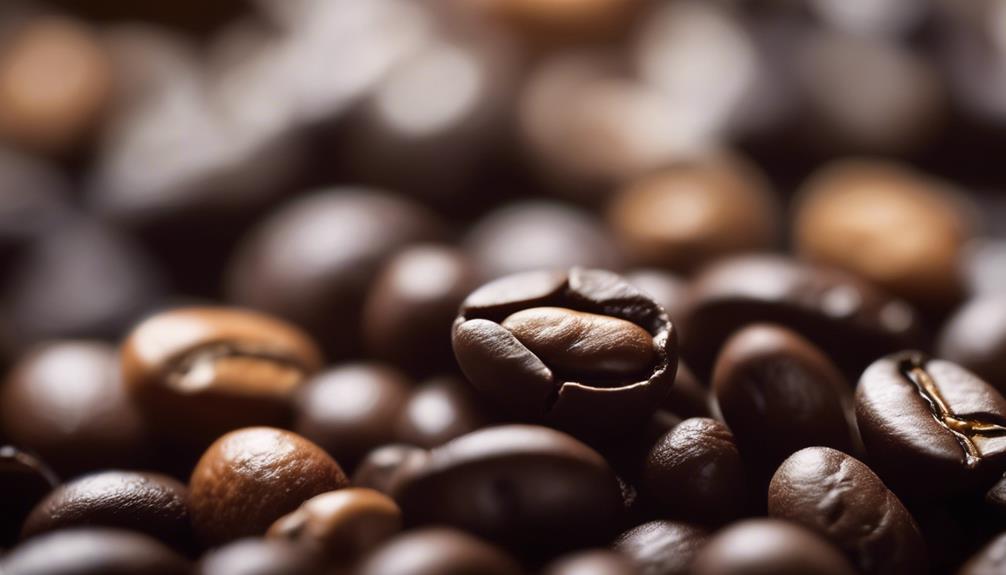
When selecting the right espresso for your martini, prioritizing hot and freshly brewed shots is essential to achieving peak aeration and creaminess in your cocktail.
Nespresso machines are a recommended choice for making espresso martinis due to their convenience and consistent quality. The hot temperature of freshly brewed espresso helps create a creamy texture in your martini, enhancing its overall taste.
If you don't have access to an espresso machine, using shots of espresso from a local coffee shop can be a suitable alternative. Remember, espresso is essential for an authentic espresso martini; substituting with coffee will alter the drink's taste.
To make sure the flavor of the espresso shines through in your martini, using quality espresso is paramount. By prioritizing hot, freshly brewed espresso shots, whether from a Nespresso machine or a local coffee shop, you can elevate the creaminess and taste of your dairy-free espresso martini.
Vegan-Friendly Ingredients for a Creamy Texture

To create a creamy texture in your dairy-free espresso martinis, consider using plant-based milk alternatives like oat milk. These options not only provide a rich consistency but also cater to vegan preferences.
Experimenting with different dairy-free ingredients can elevate the overall taste and experience of your cocktail.
Creamy Texture Alternatives
For a vital texture in your dairy-free espresso martinis, consider incorporating oat milk, almond milk, coconut milk, or soy milk as vegan-friendly alternatives. Oat milk, known for its creamy consistency, is a popular choice that can enhance the overall texture of your cocktail.
Additionally, almond, coconut, and soy milk are versatile options that can also provide a rich and smooth mouthfeel to your dairy-free espresso martinis.
The essential texture plays a significant role in balancing the bitterness of espresso and the sharpness of vodka in your cocktail. By using quality dairy-free coffee liqueur alongside these plant-based milk alternatives, you can further elevate the flavor profile while maintaining that desired creamy texture.
Adding oat milk specifically to your dairy-free espresso martinis can offer a similar experience to adding cream to coffee for extra richness. Experimenting with different plant-based milk options allows you to tailor the texture of your cocktail to suit your preferences and create a delightful dairy-free alternative.
Plant-Based Milk Options
Consider expanding your knowledge on plant-based milk options to elevate the creamy texture of your dairy-free espresso martinis. Oat milk stands out as a popular choice for this cocktail due to its creamy consistency that complements the flavors of espresso and vodka seamlessly.
While oat milk is a top contender, alternatives like almond, soy, or coconut milk can also be used to achieve a dairy-free version of this classic drink. These plant-based milk options aren't only suitable for individuals with lactose intolerance, dairy allergies, or vegan preferences but also offer a healthy twist to your cocktail.
Oat milk, in particular, is rich in fiber, vitamins, and minerals, enhancing the nutritional profile of your dairy-free espresso martini. By incorporating plant-based milk into your recipe, you can enjoy a creamy and indulgent experience without compromising on flavor or texture, making your cocktail both delicious and health-conscious.
Step-by-Step Instructions for Crafting the Perfect Martini

To craft the perfect martini, gather all your ingredients – vodka, espresso, dairy-free coffee liqueur, and simple syrup. Shake all the ingredients together with ice and strain into a chilled martini glass. The combination of the strong coffee flavor with the smoothness of the vodka and the sweetness of the liqueur creates a unique and delicious cocktail. One of the reasons for noncreamy espresso in this recipe is to maintain a clean and crisp martini texture without the added heaviness of cream.
Shake these components vigorously in a cocktail shaker for 10-15 seconds to guarantee a well-mixed concoction.
Ingredients for Espresso Martinis
Mix quality espresso, vodka, coffee liqueur, simple syrup, and garnishes like espresso beans to craft the perfect dairy-free espresso martini. When selecting coffee liqueur for your martini, opt for a high-quality brand like Kahlúa or Tia Maria to enhance the rich coffee flavor. The table below outlines the essential ingredients for creating a dairy-free espresso martini:
| Ingredient | Description |
|---|---|
| Espresso | Provides a bold and authentic coffee flavor |
| Vodka | Adds a smooth and potent kick to the martini |
| Coffee Liqueur | Enhances the coffee notes and sweetness |
| Simple Syrup | Balances the flavors with a touch of sweetness |
| Garnishes | Espresso beans for a decorative touch |
Mixing and Garnishing Techniques
Once you have gathered all the ingredients for your dairy-free espresso martini, the next step is mastering the mixing and garnishing techniques to create a perfectly balanced and visually stunning cocktail. Start by shaking all the ingredients in a cocktail shaker for 10-15 seconds. This guarantees that the flavors blend harmoniously, resulting in a well-mixed martini.
After shaking, strain the mixture into a martini or coupe glass. This classic presentation enhances the martini experience.
To add a final touch, garnish your dairy-free espresso martini with three espresso beans. Not only does this garnish provide a visually appealing finish, but it also complements the rich coffee flavors in the drink.
Remember to use quality glassware to elevate both the drinking experience and presentation of your martini. By following these step-by-step instructions, you can master the mixing and garnishing techniques needed to craft the perfect dairy-free espresso martini. For the best results, be sure to use fresh ingredients, including a high-quality espresso and a dairy-free substitute such as almond milk or coconut milk. To start, prepare your homemade shaken espresso recipe by brewing a strong shot of espresso and letting it cool to room temperature. Then, combine the espresso with your chosen dairy-free milk alternative in a shaker with ice, and shake vigorously until well combined. This will ensure that your martini is both creamy and perfectly chilled, providing a delightful balance of flavors.
Creative Variations and Flavor Enhancements

For a unique and flavorful twist on the classic dairy-free espresso martini, experiment with different flavored oat milk options like vanilla or hazelnut. These alternative milk choices can add a subtle yet distinct taste to your cocktail, enhancing the overall drinking experience.
Additionally, consider incorporating a sprinkle of cinnamon or a dash of nutmeg into your dairy-free espresso martini for an extra layer of warmth and spice.
These variations can elevate the flavor profile of your drink, catering to different preferences and creating a more customized beverage.
Whether you prefer a sweeter hint of vanilla, a nutty undertone from hazelnut milk, or the exotic notes of coconut or almond-based liqueurs, these creative additions can take your dairy-free espresso martini to the next level.
Experimenting with these ingredients allows you to craft a truly unique and personalized cocktail that suits your taste preferences.
- Flavored Oat Milk Options: Vanilla or Hazelnut
- Spices: Cinnamon or Nutmeg
- Alternative Coffee Liqueurs: Coconut or Almond-based
Serving Suggestions and Garnish Ideas
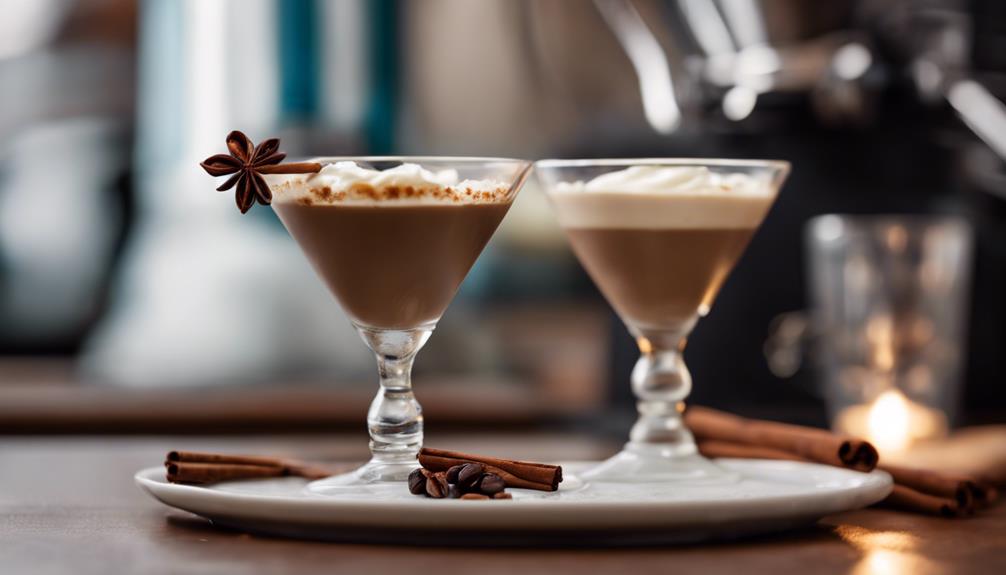
Improve the visual appeal of your dairy-free espresso martinis by garnishing them with three coffee beans for a polished presentation.
When serving your martini, opt for elegant martini or coupe glasses to enhance the drinking experience. The choice of quality glassware can greatly enhance the enjoyment of sipping on a dairy-free espresso martini, adding a touch of sophistication to your cocktail presentation.
To guarantee a seamless crafting and serving process, consider using a bar set equipped with all the necessary tools. This won't only streamline the preparation of your martini but also enhance the overall presentation of your cocktail.
For a consistent and delicious result, utilizing a Nespresso machine can simplify the process of making dairy-free espresso martinis. The convenience and efficiency of this machine ensure that you achieve a perfectly balanced and flavorful martini every time you indulge in this delightful cocktail.
Tips for Perfecting Your Dairy-Free Espresso Martini

To perfect your dairy-free espresso martini, consider experimenting with different types of oat milk to achieve a creamy texture that complements the rich flavor of a dairy-free coffee liqueur like Kahlúa.
Oat milk, whether vanilla-infused or unsweetened, can provide the ideal consistency for your martini while keeping it dairy-free.
Additionally, garnishing your drink with three espresso beans not only adds a stylish finishing touch but also enhances the overall presentation.
Try different oat milk varieties, such as vanilla or unsweetened, to find the perfect balance of creaminess.
Opt for a dairy-free coffee liqueur like Kahlúa to maintain the rich flavor profile in your martini.
Garnish your martini with three espresso beans for a visually appealing presentation that complements the coffee undertones.
Frequently Asked Questions
Is an Espresso Martini Dairy Free?
Yes, an espresso martini can be dairy-free. By swapping traditional cream or dairy-based coffee liqueur with non-dairy alternatives like oat milk, you can enjoy a creamy and delicious dairy-free espresso martini.
Opting for dairy-free coffee liqueur and simple syrup can help maintain the sweetness and richness of the drink without dairy. This alternative is perfect for those with lactose intolerance or following a vegan lifestyle.
Can I Add Oat Milk to an Espresso Martini?
Yes, you can add oat milk to an espresso martini.
Oat milk offers a creamy and dairy-free option that complements the robust flavors of espresso and vodka in the cocktail. Its creamy texture mimics traditional dairy additions, enhancing the overall taste experience.
Opting for oat milk provides a vegan-friendly alternative, making it a popular choice for those seeking a delicious and creamy dairy-free espresso martini.
What to Replace Kahlua With in an Espresso Martini?
To replace Kahlúa in an Espresso Martini, go for dairy-free coffee liqueurs like Mr. Black or St. George NOLA Coffee Liqueur.
You can also make your own coffee liqueur using brewed coffee, sugar, and vodka. Try adding flavored syrups like vanilla or hazelnut, or experiment with cold brew concentrate or espresso-infused vodka for that coffee kick.
Get creative with alternatives like amaretto or Irish cream for a unique twist in your dairy-free espresso martini recipe.
Why Doesn't My Espresso Martini Not Frothy?
If your espresso martini isn't frothy, it could be due to improper shaking techniques. Achieving frothiness relies on aerating the drink during shaking.
Over-shaking can lead to a lack of froth, affecting the texture of the martini. Using fresh espresso and quality ingredients helps maintain froth.
Finding the right balance of ingredients and mastering the shaking method are essential for a frothy espresso martini.
Can I Use Dairy-Free Alternatives in a Traditional Espresso Martini Recipe?
Yes, you can definitely use dairy-free alternatives in a traditional tini espresso martini recipe. Substitute regular cream with coconut cream, almond milk, or oat milk for a creamy texture without the dairy. Experiment with different options to find the perfect non-dairy alternative for your espresso martini recipe.
Can I Use Dairy-Free Alternatives in a Baileys Espresso Martini Recipe?
Yes, you can definitely use dairy-free alternatives in a Baileys espresso martini recipe. Substitute the Baileys with a dairy-free Irish cream and use a plant-based milk instead of regular dairy milk. The result will still be a delicious and creamy espresso martini with baileys, but more suitable for those with dairy restrictions.
Conclusion
To sum up, crafting dairy-free espresso martinis can be a delicious and satisfying alternative for those looking to enjoy a creamy cocktail without dairy. For those who want to add a little extra kick to their dairy-free espresso martini, they can try out a tequila espresso martini recipe. By substituting vodka with tequila, this twist on the classic cocktail adds a unique flavor profile that complements the richness of the espresso. Experimenting with different dairy-free milks, such as almond or oat, can further enhance the flavor and texture of the drink.
Did you know that dairy-free products have seen a 250% increase in sales over the past five years?
By following our guide, you can easily create a velvety, vegan-friendly martini that's sure to impress your guests and elevate your cocktail game.
Cheers to enjoying a tasty and guilt-free indulgence!
